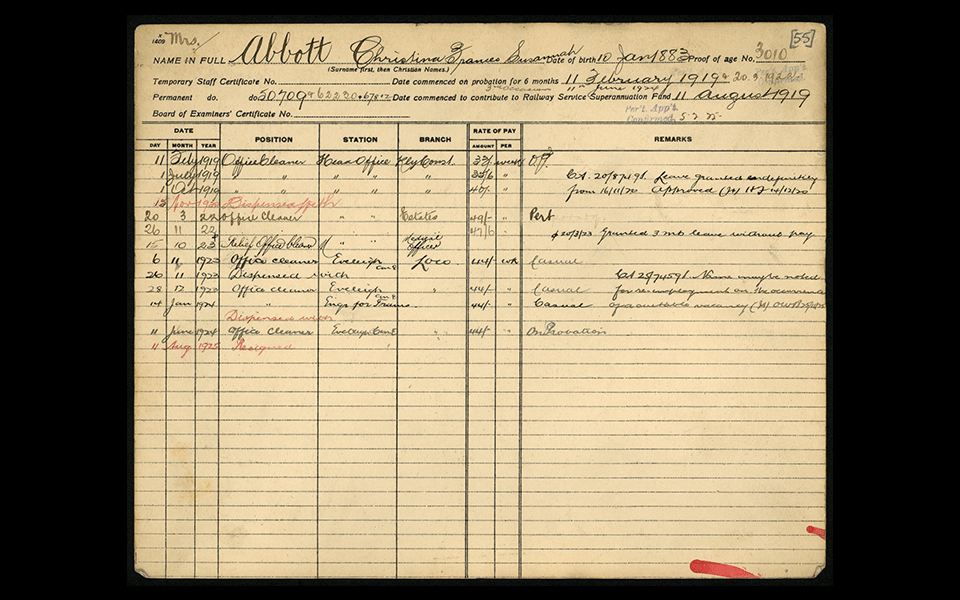Women at Work
“I think the first we saw of a woman in the workshops, was a foreman’s clerk... She was a one and only for a long time.” John Robert Bruce, former Eveleigh worker

While dominant social convention of the late 19th and early 20th centuries discouraged women in the workplace, a handful of women had always defied these expectations, as women were employed at the Locomotive Workshops continuously throughout Eveleigh’s entire 100+ years of operation.
Initially Eveleigh’s women worked in secondary roles as upholstresses, in the laundry, and as office cleaners. Although, since none of these early jobs were classified as ‘skilled’ craft work, Eveleigh’s early working women were excluded from the opportunities for promotion and career progression within NSW Railways that were available to men.
Women’s contribution to the WW1 war effort expanded positions available to Eveleigh’s women to include administrative roles such as clerical work and typing. During the 1917 Great Strike, women were crucial participants on both sides of the picket fence—both part of the voluntary work force recruited to fill jobs vacated by the strikers, as well as on picket duty during demonstrations for the rights of the strikers.
“These women, numbering several hundreds, many of whom had walked from Marrickville, Newtown, and other distant suburbs, appointed six of their number to wait upon the Acting Premier and urge him to reinstate the men on strike.” Sydney Mail, 15 Aug 1917
Eveleigh’s female workforce surged when women were conscripted into industrial employment during WW2, with women employed as process workers in the munition’s annexe in the manufacture of artillery shells. Another outcome of WW2 was the introduction of industrial nurses at Eveleigh, working at the forefront of Australia’s burgeoning awareness of worker health and safety, for the first-time replacing men in a previously male-dominated role.
“At Eveleigh, for the first time we had the employment of women in the production of shells and they had men as well working side by side. They got on quite famously and took part in several stoppages. which were quite a novelty as far as the workshops were concerned at that time. The women brought some new life into the workshops.” Stan Jones, former Eveleigh worker
From the 1950s women were employed increasingly at Eveleigh in the newly established canteen facilities and as train cleaners. Following the continuing social trend of employment of women, women finally were offered apprenticeship opportunities within NSW Railways in the 1970s and 1980s.
“Only very, very late in the piece did I see any sign of apprentices - female apprentices. ... They got into the painting trades and the electrical trades and that sort of thing… But there they started to move in, rather consistently, in the engineering fields as cadet engineers and trainee managers.” Jack Bruce, former Eveleigh worker
References and Further Reading
Taksa, L. (1999) ‘Handmaiden of industrial welfare or armed combatant? Considering the experience of industrial nursing at the Eveleigh Railway Workshops’, Health and History: Journal of the Australian Society for the History of Medicine, 1(4), pp. 298–329.
1917 'THE STRIKE: IS THE END IN SIGHT?', Sydney Mail (NSW : 1912 - 1938), 29 August, p. 6. , viewed 07 May 2021, http://nla.gov.au/nla.news-article160628904
1917 'WOMEN'S DEMONSTRATION IN FRONT OF PARLIAMENT HOUSE.', Sydney Mail (NSW : 1912 - 1938), 15 August, p. 10. , viewed 07 May 2021, http://nla.gov.au/nla.news-article160628739
